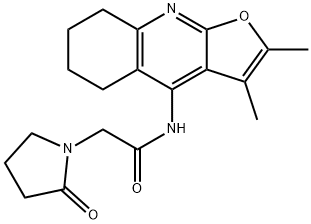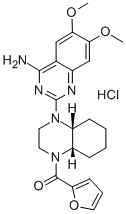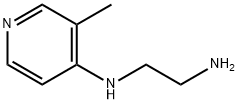Coluracetam
- CAS NO.:135463-81-9
- Empirical Formula: C19H23N3O3
- Molecular Weight: 341.4
- MDL number: MFCD00901416
- EINECS: 1308068-626-2
- SAFETY DATA SHEET (SDS)
- Update Date: 2024-11-29 14:36:51

What is Coluracetam?
The Uses of Coluracetam
Copiracetam can be used as a nootropic drug to treat memory and intellectual impairments caused by senile dementia, mild to moderate vascular dementia, trauma and other diseases, and to promote children's intellectual development; it also has antidepressant effects.
Pharmacology
Copiracetam has the ability to improve cognition by participating in the HACU process, increasing the rate-limiting step of synaptic intake of choline to synthesize the neurotransmitter acetylcholine, and increasing the activity of cholinergic neurons.
in vitro
Coluracetam (10(-10)-10(-6) moll), also known as MKC-231, significantly increased high affinity choline uptake (HACU) when it was incubated with the hippocampal synaptosomes of ethylcholine mustard aziridinium ion (AF64A) treated rats, but not of normal rats. MKC-231 did not affect the AChE activity, [3H]- quinuclidinyl benzilate binding, and [3H]-pirenzepine binding.
in vivo
Oral administration of MKC-231 (Coluracetam; 1-10 mg/kg) significantly improved the learning deficits in the Morris' water maze of AF64A-treated rats, but it did not produce any significant side effects, like tremor, salivation or hypothermia, which were observed in rats treated with high doses of tacrine [1]. In acute behavioral experiments, MKC-231 and THA had no significant effect on AF64A-induced memory deficits at any doses tested (0.3, 1.0 and 3.0 mg/kg), whereas Dup 996, at a dose of 1.0 mg/kg, significantly improved memory deficits. In chronic experiments, MKC-231 improved memory deficit at all doses tested (0.3, 1.0, or 3.0 mg/kg p.o., once daily for 11 days) and Dup 996 did so only at a dose of 3.0 mg/kg, whereas THA did not improve memory deficit at any doses tested.
Properties of Coluracetam
| Boiling point: | 634.1±55.0 °C(Predicted) |
| Density | 1.291±0.06 g/cm3(Predicted) |
| storage temp. | Sealed in dry,Room Temperature |
| solubility | DMF: 1 mg/ml; DMSO: 2 mg/ml; Ethanol: 2 mg/ml; PBS (pH 7.2): insol |
| form | A crystalline solid |
| pka | 12.01±0.20(Predicted) |
| color | White to off-white |
| InChI | InChI=1S/C19H23N3O3/c1-11-12(2)25-19-17(11)18(13-6-3-4-7-14(13)20-19)21-15(23)10-22-9-5-8-16(22)24/h3-10H2,1-2H3,(H,20,21,23) |
Safety information for Coluracetam
| Signal word | Warning |
| Pictogram(s) |
 Environment GHS09 |
| GHS Hazard Statements |
H411:Hazardous to the aquatic environment, long-term hazard |
| Precautionary Statement Codes |
P273:Avoid release to the environment. P391:Collect spillage. Hazardous to the aquatic environment |
Computed Descriptors for Coluracetam
| InChIKey | PSPGQHXMUKWNDI-UHFFFAOYSA-N |
| SMILES | N1(CC(NC2C3=C(N=C4OC(C)=C(C)C4=2)CCCC3)=O)CCCC1=O |
New Products
Tert-butyl bis(2-chloroethyl)carbamate 4-Methylphenylacetic acid N-Boc-D-alaninol N-BOC-D/L-ALANINOL 3-Morpholino-1-(4-nitrophenyl)-5,6-dihydropyridin- 2(1H)-one Furan-2,5-Dicarboxylic Acid Tropic acid 1,1’-CARBONYLDIIMIDAZOLE DIETHYL AMINOMALONATE HYDROCHLORIDE R-2-BENZYLOXY PROPIONIC ACID 1,1’-CARBONYLDI (1,2-4 TRIAZOLE) N-METHYL INDAZOLE-3-CARBOXYLIC ACID (2-Hydroxyphenyl)acetonitrile 4-Bromopyrazole 5-BROMO-2CYANO PYRIDINE 5,6-Dimethoxyindanone 5-broMo-2-chloro-N-cyclopentylpyriMidin-4-aMine 2-(Cyanocyclohexyl)acetic acid 4-methoxy-3,5-dinitropyridine 2-aminopropyl benzoate hydrochloride 1-(4-(aminomethyl)benzyl)urea hydrochloride diethyl 2-(2-((tertbutoxycarbonyl)amino) ethyl)malonate tert-butyl 4- (ureidomethyl)benzylcarbamate Ethyl-2-chloro((4-methoxyphenyl)hydrazono)acetateRelated products of tetrahydrofuran





You may like
-
 Coluracetam 99% (HPLC) CAS 135463-81-9View Details
Coluracetam 99% (HPLC) CAS 135463-81-9View Details
135463-81-9 -
 1975-50-4 98%View Details
1975-50-4 98%View Details
1975-50-4 -
 2-HYDROXY BENZYL ALCOHOL 98%View Details
2-HYDROXY BENZYL ALCOHOL 98%View Details
90-01-7 -
 2-Chloro-1,3-Bis(Dimethylamino)Trimethinium Hexafluorophosphate 221615-75-4 98%View Details
2-Chloro-1,3-Bis(Dimethylamino)Trimethinium Hexafluorophosphate 221615-75-4 98%View Details
221615-75-4 -
 61397-56-6 CIS BROMO BENZOATE 98%View Details
61397-56-6 CIS BROMO BENZOATE 98%View Details
61397-56-6 -
 14714-50-2 (2-Hydroxyphenyl)acetonitrile 98+View Details
14714-50-2 (2-Hydroxyphenyl)acetonitrile 98+View Details
14714-50-2 -
 118753-70-1 98+View Details
118753-70-1 98+View Details
118753-70-1 -
 733039-20-8 5-broMo-2-chloro-N-cyclopentylpyriMidin-4-aMine 98+View Details
733039-20-8 5-broMo-2-chloro-N-cyclopentylpyriMidin-4-aMine 98+View Details
733039-20-8